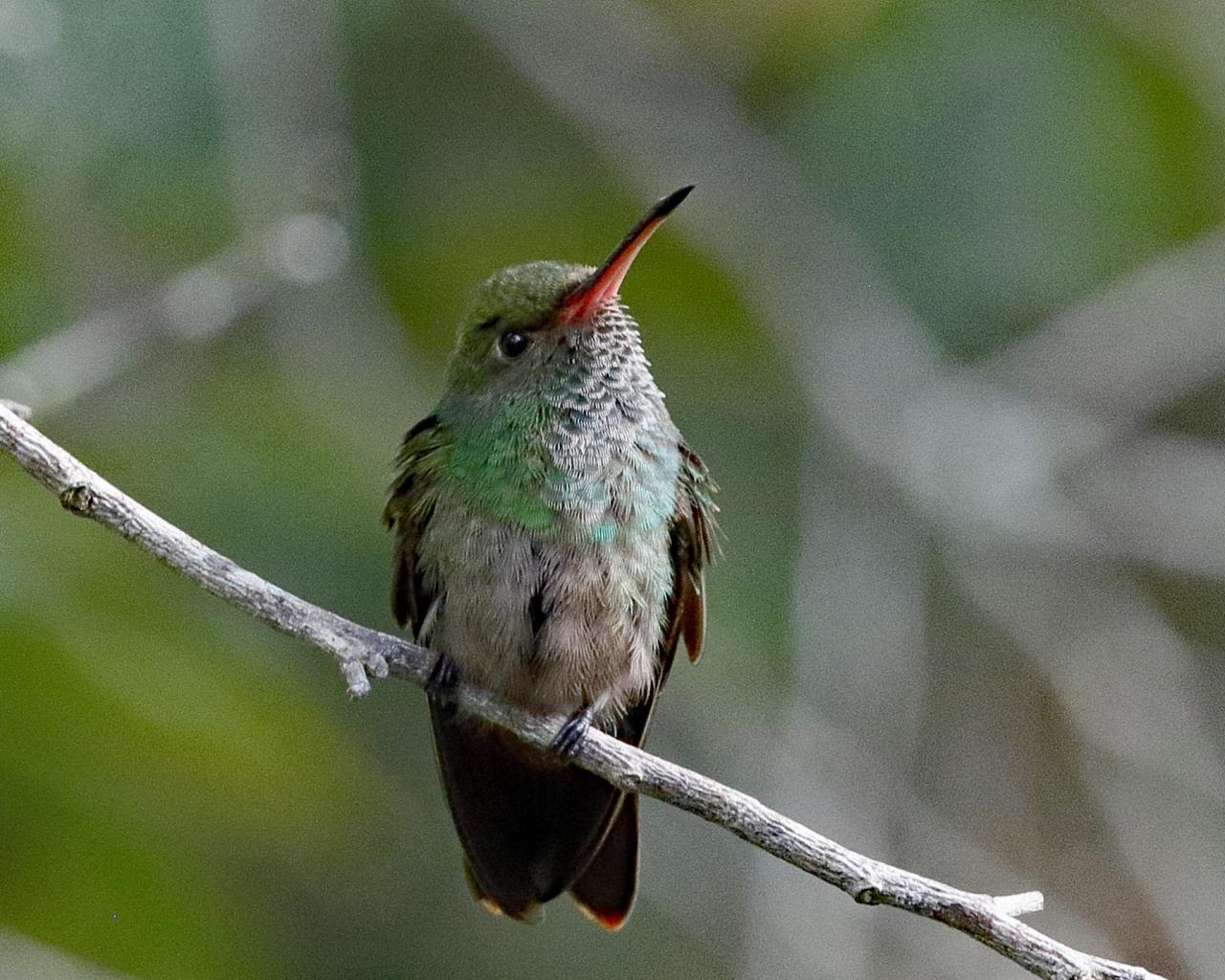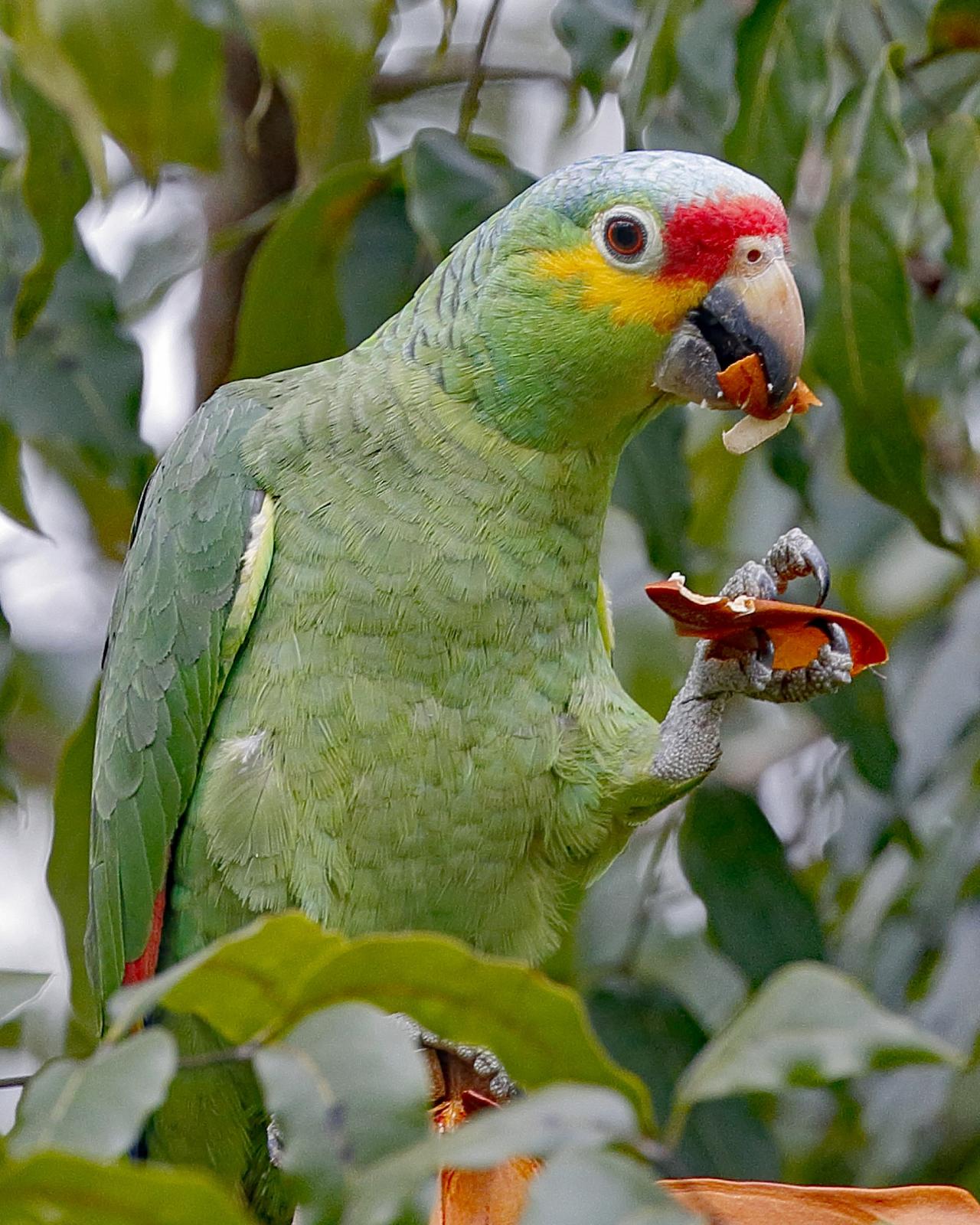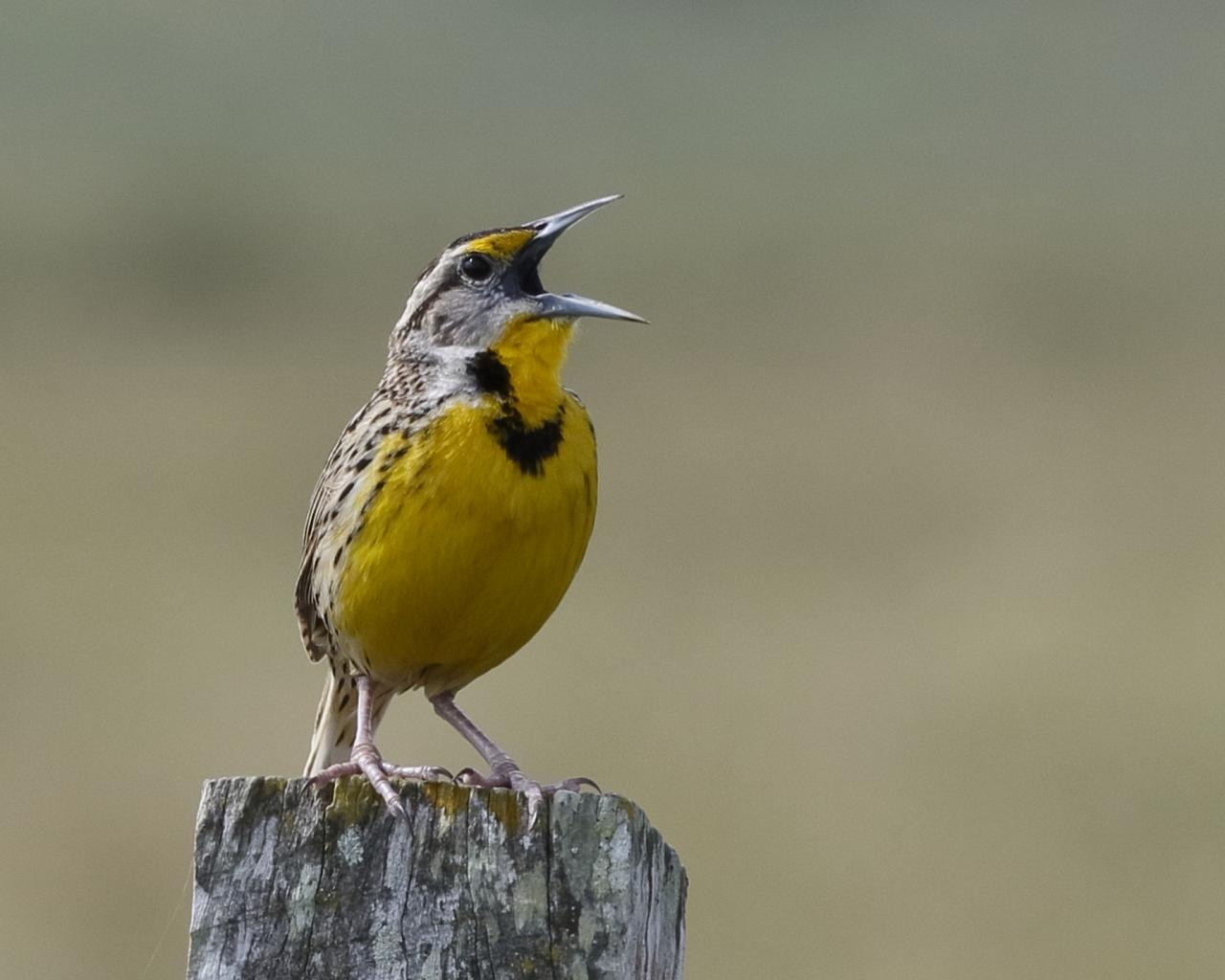- Overview
- Full Itinerary
- Photo Gallery
- Costing
- Travel Details
- Trip Reports
- Guide
- Know Before You Go
- Other Trips You May Like
Welcome to Belize, a birding paradise where vibrant ecosystems promise an unforgettable journey. Just a two-hour flight from Miami, Belize offers a rich blend of Maya ruins and lush forests, still wild enough to host Jaguars and a rich diversity of tropical birds, butterflies, and mammals. This nation’s warm, hospitable people speak English and have a strong tradition of caring for their biological legacy.
This tour is special, with time at one of the top-rated lodges of the Central American tropics (Chan Chich Rainforest Lodge)—this is a luxury retreat within in a pristine, intact wilderness. A Naturalist Journeys guide is guaranteed with a confirmed tour, joining skillful lodge guides. We've kept this group small—limited to 8 participants, for a more intimate experience.
This short and sweet tour begins at the tranquil Bird’s Eye View Lodge, nestled on the edge of the Crooked Tree Lagoon—home to over 300 bird species. A boat excursion through the Crooked Tree Wildlife Sanctuary offers the chance to spot Jabiru, Boat-billed Heron, and elusive Sungrebe, all while cruising through a wetland wonderland.
From the vast wetlands of Crooked Tree we move on to renowned Chan Chich Rainforest Lodge, set in a remote Maya plaza and surrounded by 250,000 acres of protected wilderness. We spend time with abundant bird species and charismatic wildlife like howler monkeys and if we’re really lucky, we may see evidence of wild cats. Here, you’re immersed in the colors, calls, and beauty of Central America’s avian treasures. Over 350 bird species have been recorded here, and days are filled with sightings of toucans, motmots, manakins, and hummingbirds flitting through the trees. With expert guides, serene forest trails, and stunning scenery, each moment is a chance to deepen your connection to the natural world. Whether you're an avid birder or nature enthusiast, Belize will surprise and inspire at every turn.




- "A birding paradise. Two rather exotic outposts in Central American jungle settings among Mayan ruins led to a wondrous experience. If you are a birder or just interested in ruins this is a trip for you." — Gary & Ann Carpenter, 2023 Travelers
- "Fabulous, it was well organized, well guided, food and lodges were super! The country was beautiful and the people kind." — Janet Miller 2023 Traveler
Tour Highlights
- Enjoy a short and sweet Belize experience from just two lodges
- Experience Crooked Tree Sanctuary from Bird’s Eye View Lodge, a labyrinth of lagoons and creeks rich with birdlife
- Traverse the trails of famous Chan Chich Lodge in search of trogons, parrots, toucans, and more
- Search for regional specialties such as the Yucatan Flycatcher, Yucatan Jay, Yellow-lored Parrot, and Red-vented Woodpecker
- Wake to the noisy chorus of tinamous, forest-falcons, and motmots, right outside your door
- Walk among ancient Maya plazas and unexcavated ruins
- Take night excursions in search of bats, night birds, and maybe even a Margay, Ocelot, or Jaguar!
- Take quick flights between lodges to ease travel days on bumpy roads

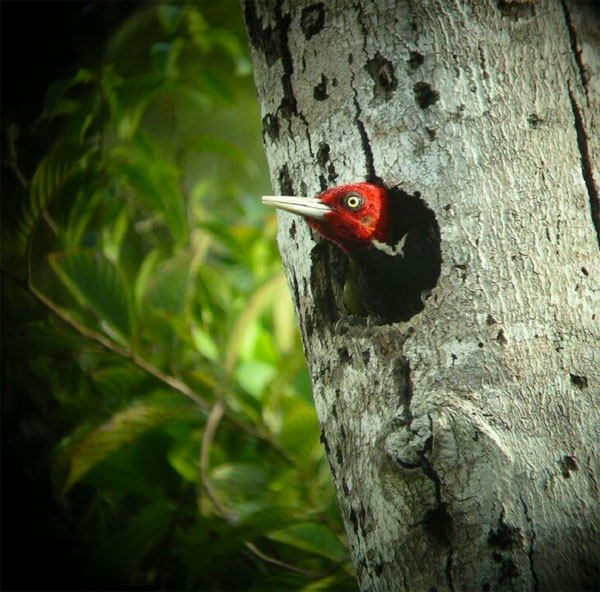


Trip Itinerary
Itineraries are guidelines; variations in itinerary may occur to account for weather, road conditions, closures, etc. and to maximize your experience.
Sun., Mar. 8 Arrivals | Bird’s Eye View Lodge
Welcome to Belize! Your local guide meets you upon arrival today and transfers you to the beautiful Bird’s Eye View Lodge. Please plan to arrive by 2:00 PM today.
Our lodge is located on the Crooked Tree Lagoon and boasts a list of over 300 bird species on their property. We can bird the lodge’s grounds today before kicking off the trip with dinner at the resort’s restaurant.
Accommodations at Bird’s Eye View Lodge (D)
Mon., Mar. 9 Crooked Tree Wildlife Sanctuary | Bird’s Eye View Lodge
After an early breakfast and coffee, we enjoy a morning boat trip in the Crooked Tree Wildlife Sanctuary. Barely an hour north of the airport, this refuge is one of the premier birding destinations for aquatic birds in Central America and is designated as a Wetland of International Importance under the Ramsar Convention.
A labyrinth of waterways and small islands, the refuge covers 16,400+ acres of creeks, swamps, and hummocks, including adjoining lowland pine savannas and tropical broadleaf forests. Watch for Morelet’s Crocodile and other reptiles, as well Yucatan Squirrel and possible Neotropical River Otter.
Inland lagoons support an astonishing array of bird life. Peregrine Falcon, Black-collared Hawk, Great Black Hawk, and Snail Kite are raptor highlights, while across the lagoon, we look for long-toed Northern Jacana and Common Gallinule among the lily pads, with Black-bellied Whistling and Muscovy Ducks nearby. Overhead we may see Caspian and Gull-billed Terns, while the vegetation along the banks supports populations of Anhinga, Tricolored Heron, and Limpkin. Additional heron species may include Little Blue, Green, both night herons (Black- and Yellow-crowned), and possibly Agami. Crooked Tree is also known for its Boat-billed Heron rookeries, which can be noisy, with birds vocalizing and bill-clacking. We also watch for Amazon, Green, Belted, Ringed, and even American Pygmy Kingfishers (the latter as small as a sparrow) perched above the water.
One of the key species we look for on the water is the Sungrebe. We also carefully watch for Jabiru storks, the tallest flying bird in Central and South America. Yucatan endemics include Red-vented (or Yucatan) Woodpecker, Yucatan Flycatcher, Yellow-lored Parrot, the raucous Yucatan Jay, and possibly even Black Catbird.
Nearby Crooked Tree Village, established around 1750, is possibly the earliest inland European settlement in Belize. Surrounded by Crooked Tree Lagoon, it is known for its locally grown and processed cashews.
We enjoy an evening sunset tour by boat that includes rum punch.
Accommodations at Bird’s Eye View Lodge (B,L,D)
Tues., Mar. 10 Bird’s Eye View Lodge | Chan Chich Lodge
We enjoy a morning bird walk on the lodge trails to look for Yucatan endemics. After lunch we depart for Chan Chich Lodge, our home for the next four nights. Chan Chich (Maya for “little bird”) is one of the premier birding lodges in the world, located near the very remote coffee and livestock producing community of Gallon Jug. We take a short flight and arrive in the early afternoon.
Chan Chich Rainforest Lodge, set in a Maya Plaza dating from the Classic Maya Period of 250 – 800 AD, is located within the 250,000 acre Rio Bravo Wilderness Conservation Area in northwestern Belize. The comfortable lodge and its twelve cabañas are made of local materials and are attractively furnished. From your porch you are likely to see Ocellated Turkey parading through the plaza, hear howler monkeys calling above, and see a Crested Guan crashing through the trees.
The extensive trail network could reveal Great Tinamou, Red-capped Manakin, Royal Flycatcher, and Lovely Cotinga, along with a host of trogons, parrots, and toucans. Finding their tracks, the possibility of sighting secretive wild cats adds to the excitement. You can visit Maya burial chambers with painted friezes still intact, canoe on Laguna Verde, or swim in a nearby stream where you might be joined by a playful River Otter. Chan Chich also has a swimming pool and spa in this exquisite forest setting.
The rich forest here is home to over 350 species of birds, including Ocellated Turkey, Great Curassow, Crested Guan, Ornate Hawk-Eagle, Maya Antthrush, Rufous-tailed Jacamar, Royal Flycatcher, and the impossibly cute and often elusive Tody Motmot. It is always a pleasure to be here!
Mammals like Yucatan Black Howler Monkey, Central American Spider Monkey, Central American Agouti, and Gray Fox are commonly seen, and five felines, including Ocelot and Jaguar, have been found here, too. Beautiful hummingbirds like the Purple-crowned Fairy and Long-billed and Stripe-throated Hermits feed in clearings around the cabins, and both Red-capped and White-collared Manakins take berries at fruiting shrubs near the dining room.
As the morning air warms, birds of prey like Bat Falcon, White Hawk, Black Hawk-Eagle, and Plumbeous Kite soar over the cabañas. By January, the bird population is even richer as local nesting birds are joined by numerous migrants: warblers, vireos, orioles, and flycatchers that spend the winter in these rich forests.
Once settled, we begin our exploration with a short afternoon hike to the Upper Plaza and the King’s Tomb Trail. Mounds that have formed over unexcavated ruins provide nest sites for Lesson's Motmot, which are frequently seen around the lodge clearing. Montezuma Oropendola, which nest in colonies around the lodge, are fun to watch as they tumble and gurgle in courtship display.
Accommodations at Chan Chich Lodge (B,L,D)
Wed., Mar. 11 – Fri., Mar. 13 Chan Chich Lodge & Nature Reserve
We have three full days to explore this wonderful lodge, including several trails on the property. One trail takes us to a lower open and moist tintal forest where specialties include Rose-throated Tanager, Gray-throated Chat, and Yucatan Flycatcher. On a recent visit to the tintal, a Pheasant Cuckoo sang endlessly. Here we have a greater chance of encountering shy birds like Ruddy Quail-Dove, Great Curassow, and Scaly-throated Leaftosser that are unlikely to venture into the lodge clearing.
We enjoy a walk on the River Trail, which skirts wetter habitats. On past tours we’ve surprised a Tapir enjoying its bath, found both Green and Pygmy Kingfishers, and watched delicate hummingbirds come in to drink and bathe. We also explore the lush Sylvester Village Road, which passes through a variety of forest types, good for birds and butterflies (when sunny). This is always a productive walk for elusive species. With luck we find an assortment of dazzling tropical tanagers, woodpecker, euphonias, and honeycreepers on our walks.
One afternoon, we stroll out on the main road leading from the lodge to the suspension bridge over Chan Chich Creek. Here, huge Blue Morpho butterflies flit by, Cinnamon Becard whistle at the roadside, and fruiting trees attract Black-crowned Tityra, Black-cheeked Woodpecker, Golden-hooded Tanager, and maybe a wintering Yellow-throated Vireo. Some spotting scope work at the bridge could produce several species of dragonflies and damselflies, including one of the red-eyed dancers or the colorful Caribbean Yellowface.
We enjoy dinners at the lodge and noisy Mealy Parrot and Olive-throated Parakeet and are seen as they come to their evening roosts.
Accommodations at Chan Chich Lodge (B,L,D)
Sat., Mar. 14 Chan Chich Lodge | Departures
Today, we leave Chan Chich and return to Belize City. We have a short drive to the airstrip at Gallon Jug for a 30-minute flight to the Belize City Airport. Please schedule return flights for noon onwards, figuring you need to be at the airport 2.5 hours ahead of your flight. Ground transportation (that takes considerably longer than the flight) is possible out from the lodge if you prefer not to fly. (B)
Cost of the Journey
Cost of the journey is per person, based on occupancy: $5990 DBL / $6725 SGL, from Belize City. The cost includes: all accommodations; all meals as stated in the itinerary (B,L,D); group airport transfers; in-country charter flights, ground transportation within Belize between two lodges; professional guide services; park, preserve, and other activity fees; and miscellaneous program expenses.
NEW! all tips other than your NJ guide (optional) and local guide are included (this includes tips for your driver, lodge and staff, day activities, meals and other services).
The cost does not include roundtrip airfare to and from Belize City, items of a personal nature like laundry, porterage, telephone charges, or alcoholic beverages, gratuities for maids or porters.
Travel Details
Please plan to make air travel plans only after the minimum group size has been met. We will send you a confirmation email as soon as the trip has been confirmed.
Arrival and Departure Airport: Philip S.W. Goldson International Airport (BZE) in Belize City
Arrival Details: Plan flights to arrive March 8, 2026, no later than 2:00 PM
Departure Details: Plan flights to depart March 14, 2026, after 12:00 PM
Travel Tip: You may wish to arrive a day early and rest up from your travels. While there are a few things to do in Belize City, most attractions are located about an hour away and would require a taxi or hiring a guide. The Belize Zoo is home to only native wildlife that have been abandoned, orphaned, or injured. It’s a great way to see almost 50 species of native animals. Does exploring an ancient Mayan city seem appealing? Then head about 30 miles north of Belize City to Altun Ha, an important archaeological zone that covers about 5 square miles. If you’re looking for something right in town, you can explore the rich culture and history at the Museum of Belize.
Hotel Recommendations: The Black Orchid Resort is about 20 minutes from the airport and they can arrange transfers. There is a restaurant on site and hotel staff can assist with booking outings. You can also relax on site and bird along the river.
Entry Requirements: See "Essential Information" section under the "Know Before You Go” tab.
Browse below for trip reports and species lists from past versions of this and other tours from this destination.
Belize
- March 2014
- February 2016
- January 2017 (w/Cave Creek Ranch)
- February 2017 (Private Tour)
- February 2017
- January 2018
- March 2018
- January 2019
- March 2019
- January 2020
- February 2020
- March 2020
- July 2021
- October 2021
- November 2021 (Birds & Beaches)
- December 2021
- January 2022
- March 2022
- November 2022
- January 2023
- February 2023 (3 Lodge Tour)
- March 2023
- November 2023 (3 Lodge Tour)
- January 2024
- February 2024 (Classic Tour)
- February 2024 (3 Lodge Tour)
- March 2024
- July 2024 (Green Season)
- December 2024 (Christmas Tour)
- January 2025 (3 Lodge Tour)
- February 2025
- March 2025
Southern Belize
- March 2018
- February 2019
- February 2020
- March 2021
- February 2022
-
Eric Martinez — Mexico Expert
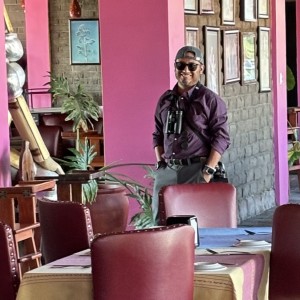
Eric Antonio Martinez, has birded the Oaxaca area for nearly 20 years. His interest started in his own village of Teotitlan del Valle, but birding has taken him to many other parts of the world. He has volunteered and worked at the Long Point Bird Observatory in Ontario, Canada, and he visits Cuba each year to see family and bird (of course). Eric travels extensively within Mexico to enjoy the birds of his beloved country.
Other trips with Eric Martinez — Mexico Expert
-
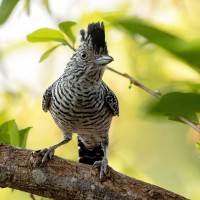 Belize: A Short & Sweet Birding Blitz Crooked Tree Lagoon & Chan Chich Rainforest LodgeJanuary 25 - 31, 2026
Belize: A Short & Sweet Birding Blitz Crooked Tree Lagoon & Chan Chich Rainforest LodgeJanuary 25 - 31, 2026 -
 Grand Oaxaca: Birds, Culture & CraftsApril 21 - May 2, 2026
Grand Oaxaca: Birds, Culture & CraftsApril 21 - May 2, 2026 -
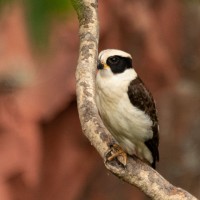 Oaxaca Valley: Birds, Culture & CraftsAugust 1 - 9, 2026
Oaxaca Valley: Birds, Culture & CraftsAugust 1 - 9, 2026 -
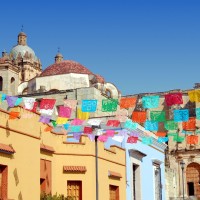 Grand Oaxaca: Valley, Mountains & Coast October 19 - 30, 2026
Grand Oaxaca: Valley, Mountains & Coast October 19 - 30, 2026
-
Essential Information +
Pace & Protocols +
Packing List +
Suggested Reading List +
Useful Links +
Photo credits: Banners: Collared Aracari by Greg Smith; Jabiru by Peg Abbott; Naturalist Journeys Group Birding Ruins by Carlos Sanchez; Great Black Hawk by Carlos Sanchez; Waders, Naturalist Journeys Stock; Barred Forest-Falcon by Narca Moore-Craig; Barton Creek Boating by Narca Moore-Craig; Birding Caracol Archeological Project by Narca Moore-Craig; Lovely Cotinga by James Adams; Keel-billed Toucan by Narca Moore-Craig; Pale-billed Woodpecker by Narca Moore-Craig; Belize Scenic, Naturalist Journeys Stock; Ornate Hawk-Eagle by Narca Moore-Craig; Masked Tityra by Peg Abbott; Green Jays by Bob Behrstock; Orange-breasted Falcon by Pat Lueders; King Vulture by Doug Greenberg; Squirrel Cuckoo by Sandy Sorkin; Black-cowled Oriole, Naturalist Journeys Stock; Blue-gray Tanager by Peg Abbott; Tody Motmot by Peg Abbott; Olive-backed Euphonia by Sandy Sorkin; Crested Guan by Sandy Sorkin; Black-faced Grosbeak by Sandy Sorkin; Ocellated Turkey by Peg Abbott; Central American Spider Monkey by Peg Abbott; Morelet's Crocodile by Peg Abbott; Black-cheeked Woodpecker by Gerold Morrison and Holly Greening; Slaty-tailed Trogon by Gerold Morrison and Holly Greening; Scaly-breasted Hummingbird by Gerold Morrison and Holly Greening; Rufous-tailed Hummingbird, by Gerold Morrison and Holly Greening; Red-lored Parrot by Gerold Morrison and Holly Greening; Long-billed Hermit by Gerold Morrison and Holly Greening; Eastern Meadowlark by Gerold Morrison and Holly Greening; Cinnamon Becard by Gerold Morrison and Holly Greening; Chestnut-colored Woodpecker by Gerold Morrison and Holly Greening.









